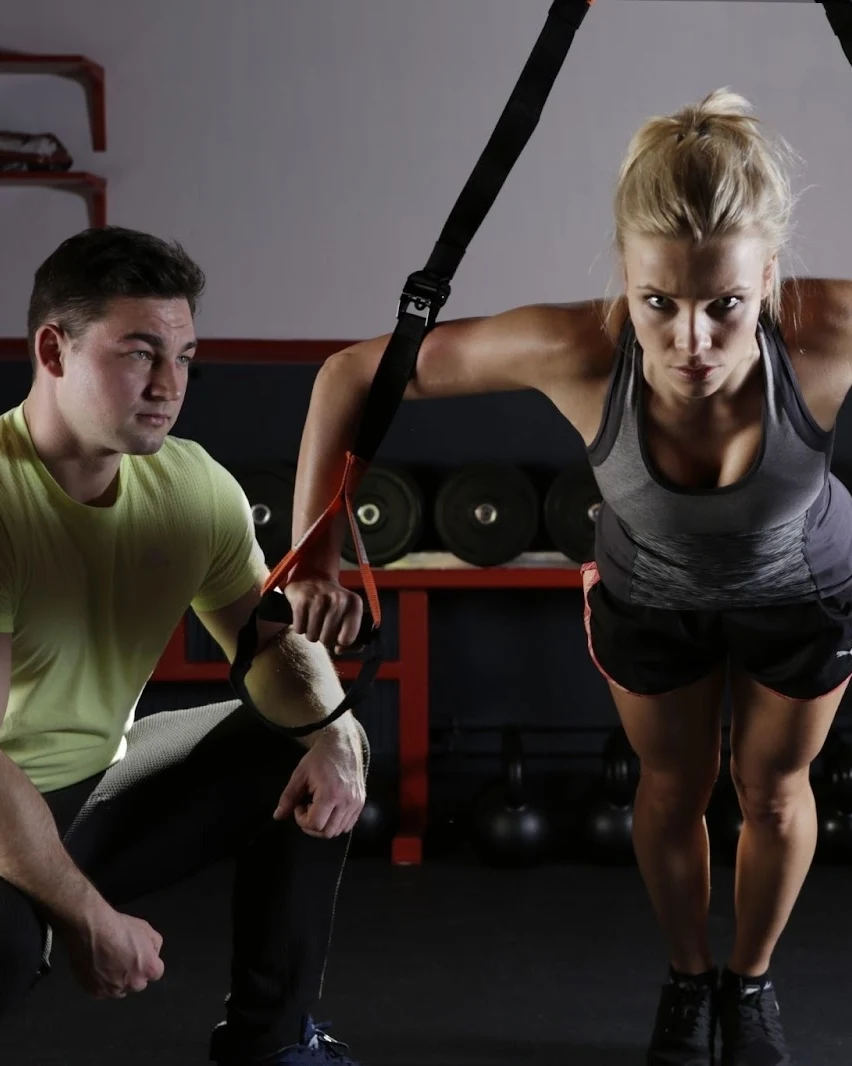Working from home can be both enjoyable and tedious, depending on your routine. When working from home, certain things must be done to maintain comfort, a sense of intelligence, and a sense of vitality. The pandemic forced many companies and businesses to operate from home, which has resulted in many people enjoying or adapting to working from home. However, there are drawbacks and benefits to this, as staying active while working from home can be challenging.
The following tips will assist you in remaining active while working from home.
Refresh:
Take a bath.
When you wake up in the morning, just as you do before going to work, you must take a bath. Numerous studies have demonstrated that showering and bathing can stimulate creativity. Bathing relaxes you, improves your heart health, makes breathing easier, benefits your brain and nervous system, relaxes your joints, boosts your immunity, and balances your hormones.
Clean your teeth before you start work.
Brushing your teeth gives you a sense of well-being and refreshment. You feel more confident, are more presentable, and have a brighter, more attractive smile.
Wear formal and comfortable clothes.
Just because you work from home doesn't mean you have to wear your pajamas all day. Your outfit is part of the boost.
Eat breakfast before you begin work.

Breakfast is essential because it jumpstarts your metabolism. Different studies have linked eating breakfast to improved health. Some of the foods we consume for breakfast help us stay awake and attentive by boosting our brain's sugar levels. Foods such as full-grain cereal, coffee, milk, eggs, toast, and so on are all known to enhance your brain's ability to concentrate. Because of this, eating a nutritious breakfast can help you become smarter in the long run.
Hernias are a very common health issue for many people all over the world. Despite this, they are also very frequently misunderstood, and that leads to a wide variety of problems that could otherwise be avoided altogether. If you are curious about hernias, either because you are worried you might have one or simply because you want to know about them for the future, then read on.

In this post, we’ll take you through everything that you need to know about hernias, including what causes them, how you can know you have one, and what the possible treatments might be. Understanding all of this should be a huge help should you have one in the future, or even just be worried about having one.
First and foremost, what exactly is a hernia? In simple terms, a hernia is just when the intestine pushes through a weak spot in the lower abdomen. When this happens, it causes a physical and visible lump on the outside of the body, which is usually accompanied by a strong degree of pain. There can also be hernias that cause other symptoms such as chest pain, trouble swallowing, or even heartburn, although not with all kinds of hernias. There are also hernias that may cause no symptoms whatsoever, although these tend to be somewhat rarer.

In this post, we’ll take you through everything that you need to know about hernias, including what causes them, how you can know you have one, and what the possible treatments might be. Understanding all of this should be a huge help should you have one in the future, or even just be worried about having one.
What Is A Hernia?
First and foremost, what exactly is a hernia? In simple terms, a hernia is just when the intestine pushes through a weak spot in the lower abdomen. When this happens, it causes a physical and visible lump on the outside of the body, which is usually accompanied by a strong degree of pain. There can also be hernias that cause other symptoms such as chest pain, trouble swallowing, or even heartburn, although not with all kinds of hernias. There are also hernias that may cause no symptoms whatsoever, although these tend to be somewhat rarer.
Who Can Get A Hernia?
A hernia can happen to anyone at any age - it can even occur in newborn babies in some rare cases. They are slightly more common amongst the male population - in fact, around a quarter of men develop a groin hernia at some point in their lifetime. It is more likely, however, amongst those who have some family history of hernias, although having such a history is not necessary for a hernia to appear.I am gradually adjusting my attendance on special occasions. Would you believe this is my second wedding as an adult? That's crazy because so many of my friends and family have married, but I've always been unable to attend due to my distance.

I was invited to this wedding by a friend, and I must say that I thoroughly enjoyed my time there. Have you ever attended an event for which you can confidently state that you have no regrets? This is one of those unique wedding occasions on which I had a great time. Allow me to comment on the food, the organizers, and the couples who created an elegant yet simple and fun occasion.
As you must look that you look stunning; your gown must contribute to the occasion's opulence. I chose to wear this sequin gown, which was one of the dresses I never got to wear after shooting for Ever-Pretty. I'm glad I got to wear it to such a lovely occasion.

As you must look that you look stunning; your gown must contribute to the occasion's opulence. I chose to wear this sequin gown, which was one of the dresses I never got to wear after shooting for Ever-Pretty. I'm glad I got to wear it to such a lovely occasion.
2 comments
This way you can have a long-lasting and gratifying experience training others and getting fit yourself. There’s a lot of competition out there so you must be sure to communicate reasons to work with you and what makes your training style unique and why it works.
Increasing Knowledge
You must educate yourself as a personal trainer and make sure you’re up to speed with the latest techniques and nutritional guidelines. Your job is to teach your clients the best ways to work out and get into better shape. They’re looking to you for answers and you need to make sure you have the right education and knowledge to help them succeed. Take time to explain concepts and best practices to them and go the extra mile by sending them reading materials or tips that will allow them to have better training sessions with you.
Exercising & Staying Fit
Every personal trainer should be exercising and staying fit themselves. You want to set a good example for your clients and know what types of workouts provide the best results. Challenge yourself by trying new techniques and exercises before you have your clients do them. What’s most important is that you do all that’s in your power to stay safe and prevent any injuries from occurring. If you end up having to manage a disability and can’t work then you’ll want to apply for benefits. Should you be denied these benefits then you’ll want to contact reliable social security disability lawyers who can review your case in greater detail and help you appeal the decision.
Recognize Your Birth Control Options
What is birth control?
Birth control is a method of preventing conception for both men and women. There are several birth control options available. By being more informed about the many alternatives, you can determine which one is best for you and your spouse.
If you are sexually active and do not wish to have children, do not delay using birth control. Any time you have unprotected intercourse, an unwanted pregnancy is possible.
Recognize Your Contraceptive Options
Contraception and family planning are not novel ideas. While humans have attempted to avoid conception for generations, the widespread availability of effective chemical birth control is a comparatively new development. In 1960, When the FDA approved the first birth control pill in the United States, it opened up new possibilities for women all over the country, allowing them to plan their careers, relationships, and children in wholly new and innovative ways. Numerous additional contraceptive methods have been developed since then.
Contraceptive methods
There are numerous types of contraception available to women, each with its own set of benefits and drawbacks. Within each category, various brands may add to the variety. While having too many options is rarely a bad thing, deciding which is best for you can be overwhelming.
Contraceptive pills
This is the most often-used method of birth control, though its use has waned in recent years. Birth control tablets are 91% effective and must be used daily to prevent pregnancy.
There are two types of tablets in this category: combination pills that include both progestin and estrogen and micro pills that contain only progestin. You and your doctor can discuss both alternatives to determine which is best for you.
Birth control pills are painless and readily available, but they must be used responsibly and on a daily basis. Just one missing dose can result in an unintended pregnancy. In addition, the pill is less effective than injections or intrauterine devices, though you should be protected if you take it on a consistent schedule every day.
Intrauterine implants
Intrauterine devices, or IUDs, are very small implants that are placed in the uterus. They are one of the most effective methods of contraception available, and they are available in two forms: copper and hormonal. Again, you and your doctor can review both alternatives to choose which is best for you.
Your IUD can last for years with little care required. Women can become pregnant immediately after the IUD is removed. This makes it the preferred method of birth control for women seeking a hands-off, convenient method that will not interfere with future family planning.
Chronic pain and disease can have a detrimental effect on your mental, emotional, and physical health. That is why it is critical to work with a healthcare professional who is knowledgeable about your illness and attentive to your requirements. If you're having difficulty performing daily duties as a result of chronic arthritis, a management plan can help you streamline your routine, get relief, and live a happy life.
Dr. Amit Paliwal of Indus Healthcare in Pomona, West Covina, and Montclair, California, provides treatment for conditions such as chronic arthritis in order to improve patients' quality of life. He assists you in determining how to live with arthritis and enhancing your entire outlook.
The two most common kinds of arthritis, osteoarthritis and rheumatoid arthritis, are both chronic and degenerative. This indicates that there is no permanent treatment and that symptoms may persist and deteriorate over time. While this may sound like a doomsday diagnosis, medical improvements enable you to manage your disease and maintain an active lifestyle.
Osteoarthritis is caused by normal joint wear and strain. While infection or injury can increase the damage, the majority of people get some kind of degenerative joint disease as they age. Chronic pain is a frequent symptom of osteoarthritis and can be exacerbated by extreme cold or heat, excessive exercise, or immobility.
Rheumatoid arthritis is a more aggressive form of arthritis. It is brought about by an autoimmune condition that targets the synovial membrane that lines your joints. Your immune system gradually degrades the cartilage in a joint over time, resulting in stiffness, deformities, inflammation, and chronic discomfort.
Dr. Amit Paliwal of Indus Healthcare in Pomona, West Covina, and Montclair, California, provides treatment for conditions such as chronic arthritis in order to improve patients' quality of life. He assists you in determining how to live with arthritis and enhancing your entire outlook.
Basic information about chronic arthritis
The two most common kinds of arthritis, osteoarthritis and rheumatoid arthritis, are both chronic and degenerative. This indicates that there is no permanent treatment and that symptoms may persist and deteriorate over time. While this may sound like a doomsday diagnosis, medical improvements enable you to manage your disease and maintain an active lifestyle.
Osteoarthritis is caused by normal joint wear and strain. While infection or injury can increase the damage, the majority of people get some kind of degenerative joint disease as they age. Chronic pain is a frequent symptom of osteoarthritis and can be exacerbated by extreme cold or heat, excessive exercise, or immobility.
Rheumatoid arthritis is a more aggressive form of arthritis. It is brought about by an autoimmune condition that targets the synovial membrane that lines your joints. Your immune system gradually degrades the cartilage in a joint over time, resulting in stiffness, deformities, inflammation, and chronic discomfort.
For older adults, falls are the leading cause of injury, and many of these injuries are fatal. A fall becomes more dangerous as you age. That is why it is critical to identify fall hazards in your residence and to keep emergency services close at hand.
As we age, nearly every facet of our health begins to decline. Muscles deteriorate, bones grow more brittle, and our center of gravity becomes more difficult to locate.
Osteoporosis is prevalent in older adults, particularly postmenopausal women, smokers, and individuals with a history of alcoholism. This illness weakens and brittles your bones, which might result in catastrophic injuries if you stumble or fall.
Additionally, many seniors have eye difficulties and poor balance, which increase their risk of falling. Dizziness can be caused by a variety of conditions, including low blood pressure, dementia, and vertigo, putting you in even greater danger.
Each fall increases your risk of falling again by a factor of two, so it's critical to keep alert of your surroundings and eliminate risk factors in your house.
While we perceive our houses to be safe havens, they can sometimes be highly dangerous. While rugs and high cupboards may appear harmless, they might pose a threat to seniors living in their homes. If you or a loved one has previously fallen, be aware of the following frequent fall risks:
Cabinets that are difficult to reach can throw you off balance when you reach up to grab items.
Rugs, particularly those on hardwood or tile floors, have a tendency to slide beneath your feet.
Stairs, particularly those that are steep, poorly lit, or uncarpeted, pose a fall hazard.
It's challenging to navigate in low lighting, especially if you have impaired vision.
Clutter, such as laundry baskets and cords, can clog walkways and make movement around the house difficult.
Slips and falls can occur on wet or glossy floors in persons of all ages, not just seniors.
In the middle of the night, a long walk to the restroom can be deadly.
Entering and exiting the tub or shower can be challenging and dangerous.
You can make your home as fall-proof as possible by moving furniture or installing grab bars in the shower and tub.
Why are falls more deadly as you age?
As we age, nearly every facet of our health begins to decline. Muscles deteriorate, bones grow more brittle, and our center of gravity becomes more difficult to locate.
Osteoporosis is prevalent in older adults, particularly postmenopausal women, smokers, and individuals with a history of alcoholism. This illness weakens and brittles your bones, which might result in catastrophic injuries if you stumble or fall.
Additionally, many seniors have eye difficulties and poor balance, which increase their risk of falling. Dizziness can be caused by a variety of conditions, including low blood pressure, dementia, and vertigo, putting you in even greater danger.
Each fall increases your risk of falling again by a factor of two, so it's critical to keep alert of your surroundings and eliminate risk factors in your house.
Fall hazards that are frequently encountered
While we perceive our houses to be safe havens, they can sometimes be highly dangerous. While rugs and high cupboards may appear harmless, they might pose a threat to seniors living in their homes. If you or a loved one has previously fallen, be aware of the following frequent fall risks:
Cabinets that are difficult to reach can throw you off balance when you reach up to grab items.
Rugs, particularly those on hardwood or tile floors, have a tendency to slide beneath your feet.
Stairs, particularly those that are steep, poorly lit, or uncarpeted, pose a fall hazard.
It's challenging to navigate in low lighting, especially if you have impaired vision.
Clutter, such as laundry baskets and cords, can clog walkways and make movement around the house difficult.
Slips and falls can occur on wet or glossy floors in persons of all ages, not just seniors.
In the middle of the night, a long walk to the restroom can be deadly.
Entering and exiting the tub or shower can be challenging and dangerous.
You can make your home as fall-proof as possible by moving furniture or installing grab bars in the shower and tub.
There is never a time when you are too young or too old to take care of your heart! The decisions you make now have an effect on how your heart feels in the future. You do not have to be at a high risk of developing heart disease to take preventative measures. Anyone, regardless of age, can benefit from maintaining a healthy heart! Here are some straightforward measures for preventing heart disease:
1. Eat a balanced diet
Simple changes in your unhealthy eating habits can have a significant effect on your heart. The trick is to consume fewer processed foods and a greater variety of fresh fruits and vegetables. Additionally, you should consume fiber-rich whole grains, seafood, nuts, and legumes. Consume less saturated fat, trans fat, and sodium-containing items, such as fried foods, chips, cookies, doughnuts, and fast food. Consume salmon, citrus fruits, avocado, and dark chocolate instead. Substitute almonds or blueberries for your midday snack! Not to mention the spinach! Use spinach in place of lettuce in sandwiches and salads. Simple substitutions of harmful items here and there will assist you in achieving a healthy diet.
2. Maintain an active lifestyle
This is one of the simplest tips to implement and one of the most effective. Exercise is critical for maintaining a healthy heart. Additionally, exercising does not have to be difficult. It might be as simple as strolling through your neighborhood or as strenuous as running a marathon. Set out an hour each evening after work to engage in some form of physical activity, whether it's going to the gym, participating in a sport, or simply going for a stroll. All you have to do is stay upright and active. If you're new to exercise, begin cautiously by spending 2.5 hours per week on moderate-intensity physical activity. Once exercise becomes ingrained in your daily routine, it will develop into a habit that you will find difficult to break!
Below is a guide to perimenopausal bleeding to help you decide when it's time to see a doctor about your symptoms.
Normal can be a little difficult to define when it comes to menstruation. What is considered normal for one woman may not be for someone else. For instance, while the average interval between menstrual cycles is 28 days, a healthy cycle can last between 21 and 35 days.

As you get closer to menopause — which is defined as one year since your last menstruation cycle — you may notice that your normal schedule changes. Women's cycles frequently change in length during the years preceding menopause, which doctors refer to as perimenopause. Bleeding may become more intense or less intense. You may even skip a period on occasion. When these changes are combined with existing individual variation, it can be difficult to determine what constitutes a problem — and what does not.
Dr. Karen Carlson, an internal medicine specialist and associate professor at Harvard Medical School, provided some guidelines for women to use when determining which changes are normal variations and which should be brought to the attention of a physician. Here are her responses.
Q. Could it be common for women to have menstrual changes during perimenopause?
A. Menstrual changes are normal during perimenopause, which typically begins four years before the last menstrual period.
Q. When it comes to the years leading up to menopause, what kinds of changes are typical?
A. As a woman enters her late reproductive years in her forties, her cycles frequently become shorter. The intervals between periods begin to lengthen as perimenopause progresses. Menstrual changes can also be more dramatic, including missed periods and occasional episodes of heavier bleeding. After several years of irregular menstruation, menstrual periods cease entirely. It's critical to remember that no one-size-fits-all pattern exists, and women should never hesitate to report a concern to their physician.
Q. What kinds of bleeding should be brought to the attention of a medical professional?
A. Generally, more severe or prolonged bleeding (greater than seven days) is a cause for concern rather than the absence of bleeding. Between periods, continued irregular bleeding or spotting is not normal and should be reported. Keep in mind that even if you miss a period, pregnancy is still a possibility, even as fertility declines as menopause approaches.
Q. When should you consult with your doctor, and how long should you wait? Is a single abnormal cycle sufficient, or should you wait for several cycles?
A. I will say It depends on the magnitude of the change. Sudden onset of extremely heavy premenopausal bleeding should prompt a call to report the event. It is reasonable for a woman who is experiencing longer cycles or who skips a period to keep a menstrual diary for a few cycles and then consult with her doctor.
Nutritional health does not have to be costly. Indeed, the reverse is true. Some of the healthiest foods available at supermarkets are also some of the least expensive.
You don't need to spend a fortune to stock your refrigerator and pantry with the healthiest foods for regular meals, which will help you cut down on takeout and bad snacks. If nutritious foods are more readily available and ready to eat, you will consume more of them.
Thoughts on food
Healthy buying comes down to a few fundamental methods. Moore's advice for selecting the greatest foods at the best rates is shown below.
Create a plan. Make a list of everything you require, from the essentials to ingredients for specific dishes. Sticky notes to your refrigerator and jot down products you'll need during the week so you're not forced to create a comprehensive list all at once. Another alternative is to use your phone to take images of the inside of your refrigerator and pantry to use as a visual reference when you're at the grocery shop.
Each week, shop on the same day. A basic routine removes the need for additional store visits, which may encourage you to purchase items that weren't on your list.
Work your way around the perimeter. This is frequently where the most nutritious, least processed items, such as fresh vegetables, dairy, and frozen foods, may be found. However, this is dependent on the setup of the shop.
Subscribe to:
Posts (Atom)







